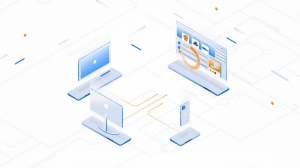In the digital era, the concept of document storage has transformed dramatically. Organizations and individuals alike are shifting towards digital archiving as a means to preserve, access, and manage their important documents over extended periods. This shift has brought with it a host of considerations, particularly in terms of long-term sustainability and security. Understanding these nuances is crucial for anyone looking to implement a robust digital archiving strategy.
The Evolution of Document Storage
Historically, document storage meant physical file cabinets filled with paper records. However, the advent of digital technology has revolutionized this practice. Digital archiving now allows for the storage of vast amounts of data in electronic formats. This transition not only saves physical space but also facilitates easier searching and retrieval of information.
The evolution of digital archiving has been influenced by several factors including technological advances, regulatory requirements, and changes in organizational processes. These factors have pushed the development of more sophisticated systems designed to meet the complex demands of long-term data retention.
Understanding Digital Archiving
Digital archiving involves the storage of documents in an electronic format with the intention of preserving them for future reference. This process is not just about converting documents into digital form; it's also about ensuring that the information remains accessible and intact over time. To achieve this, digital archives utilize various technologies and methodologies to manage data lifecycle, ensure data integrity, and protect against data loss.
Key Considerations for Long-Term Document Storage
-
Data Integrity and Authenticity: Maintaining the authenticity and integrity of documents over time is paramount. This involves ensuring that documents are not altered from their original state and that their provenance and legitimacy are verifiable.
-
Compliance and Legal Considerations: Different industries are subject to specific regulatory requirements that dictate how records must be kept. These regulations often specify the format, duration, and conditions under which documents must be stored.
-
Technological Obsolescence: One of the major challenges with long term document storage is the rapid pace of technological change. Ensuring that data remains accessible as hardware and software evolve is a constant challenge.
-
Security Measures: Protecting archived documents from unauthorized access and cyber threats is crucial. This involves implementing robust security protocols and regular audits to safeguard data.
Strategies for Effective Long-Term Digital Archiving
Implementing an effective digital archiving strategy requires a comprehensive approach that encompasses technology, processes, and people.
-
Technology: Selecting the right technology is crucial. This includes choosing appropriate file formats that are likely to be accessible in the long term, as well as investing in reliable storage solutions that offer scalability and robust data protection features.
-
Processes: Developing standardized processes for document management helps in maintaining consistency and reliability in the way documents are handled and stored. This includes procedures for document creation, conversion, indexing, and retrieval.
-
People: Training and development of staff are essential to ensure that they are equipped with the necessary skills to manage digital archives effectively. Additionally, roles and responsibilities must be clearly defined to ensure accountability.
The Role of 'Words from Banking' in Digital Archiving
role of words from banking In sectors like banking, where terminology and data are highly specialized, the integration of industry-specific lexicons into digital archiving systems can enhance searchability and categorization. For instance, terms commonly used in banking can be programmed into digital archiving systems to improve the indexing of documents related to financial transactions and audits.
Future Trends in Digital Archiving
Looking forward, the field of digital archiving is set to become more complex with advancements in technology. Artificial intelligence and machine learning are expected to play a significant role in automating document categorization and retrieval processes. Blockchain technology could also enhance the security and transparency of digital archives.
Conclusion
Long-term document storage in the realm of digital archiving requires a thoughtful approach that considers technological, legal, and procedural aspects. As digital technologies continue to evolve, staying informed about best practices and emerging trends is crucial for anyone responsible for maintaining digital archives. This knowledge ensures that documents remain secure, accessible, and useful for years to come.






